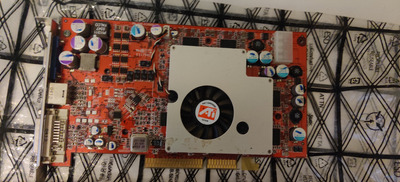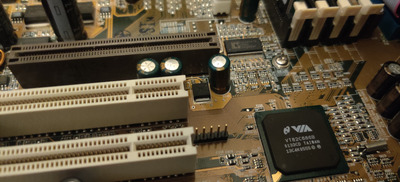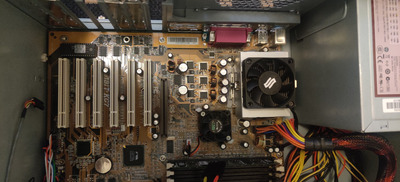Reply 300 of 346, by mockingbird
Ok, I did some more testing. I changed the multiplier to 21 at the underside of the motherboard socket pins and set the FSB to 100Mhz via jumpers on the motherboard (testing with a Biostar M7VKD). The system boots at 2.1Ghz and is stable. The purpose was to allow a lower CPU speed (300Mhz), as opposed to running it at 133Mhz FSB (where the minimum system speed was 3 x 133 - 400Mhz).
VIAFSB was mentioned, but VIAFSB is not very useful because it does not allow reducing the FSB from 133Mhz to 100Mhz. It does not work like you think it does on the K7 platform compared to other platforms. For all intents and purposes, it is not very useful for throttling (on this platform).
Also, bear in mind, I am only focusing on processor speed and disabling caches (or the L1 cache only, in our case, because disabling the L2 is not helpful nor possible for that matter) and ignoring other throttling methods because I have found them to be lacking in terms of compatibility with many games (Jazz Jackrabbit, Titus) .
At 500Mhz with L1 disabled (setmul 5 l1d), NSSI puts it approximately on par with a 386 DX/33
At 1.1Ghz with L1 disabled (setmul 11 l1d), NSSI puts it roughly on par with a 386 DX/40
A few things to note:
1) You are only allowed to set multipliers from 3x to 11x (minus 4x, which hangs the system, at least with this configuration). You get access to the half multipliers only after 5x (so 5.5, 6.5, 7.5, etc..., but not that they're useful)
2) The system requires a hard reset after playing with the multiplier (or when I set it to 3x, at least), it won't POST with a regular reboot
3) Going back to the full speed of 2.1Ghz requires a reboot. Setmul will only allow you to set it back up to 1.1Ghz (11x multiplier) when you change it
So all in all, not the most versatile platform for throttling. Certainly better than a lot other platforms out there, but I would prefer something that allowed me a wider range of speed at the low end (486 would be nice). And this concludes my years-long investigation into the K7 platform as a viable platform for retro builds.
edit: Just a small addendum -- The Abit KT7A has a unique PLL (PhaseLink PLL205-03) which does in fact supports 66Mhz FSB. Theoretically, a 200Mhz downclock should then be possible with the K7 (3 x 66), but VIAFSB doesn't actually succeed in setting the 66Mhz ("viafsb pll205-03 66.80 -u") just get's stuck at "Setting FSB...". I think this is a chipset limitation and not a bug or anything with VIAFSB. But this is irelevant for the most part, because K7 does not scale well at all with clock speed increases (or decrases for that matter) once you disable its L1. You can throw hundreds of megahertz at it, but as long as the L1 is disabled, it's consistently about as fast as a 386, except with the added oddities you get from disabling a CPU's L1 cache.




